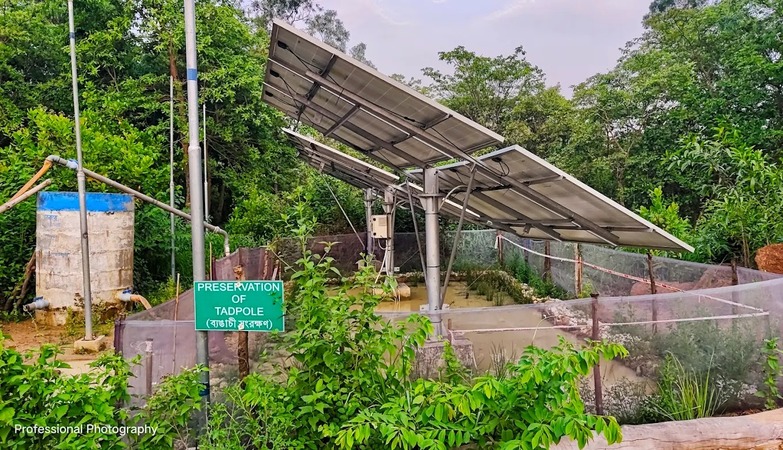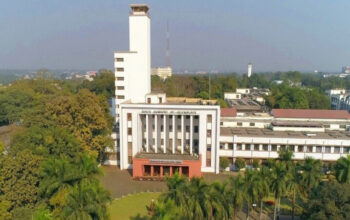Biswabrata Goswami
MIDNAPORE, 13 OCT: Just a few kilometres from Midnapore town, in the sunburnt lateritic heartland of Murakata, stands a park that was once hailed as a beacon of ecological revival. The Gopalpur Biodiversity Park—spread over 23 acres of sal, teak and mahua groves—is supposed to be a sanctuary for threatened species and a learning ground for the next generation. Yet today, its high fences and resort gates tell another story—one where conservation and community are uneasily at odds.
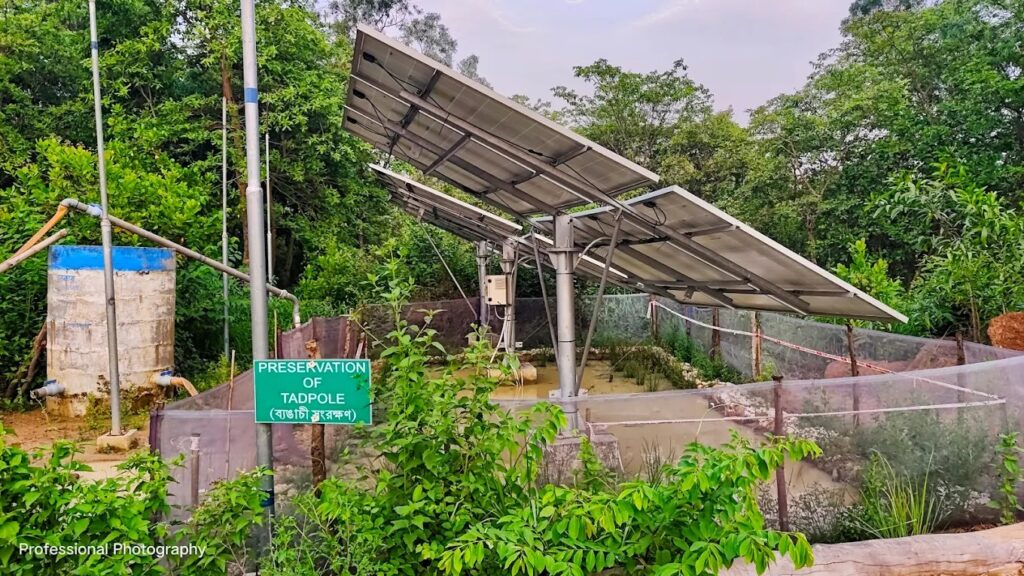
Established by the West Bengal Biodiversity Board under the Government of West Bengal, Gopalpur is one among 13 biodiversity parks across the state. Developed initially in 2015–16 with financial support from the Junglemahal Action Package (JAP) Fund of the Midnapore Sadar Block, the park received a new lease of life in 2022 through the Department of Environment. The facelift was ambitious: reforestation drives, walking trails, interpretive signage, and plans for an “Abhaya Pond” to host hundreds of endangered freshwater fish species—once common across Bengal’s wetlands but now vanishing.
When Dr. Himadri Sekhar Debnath, Chairman of the West Bengal Biodiversity Board, visited the site after its renovation, he envisioned Gopalpur as a future hub of environmental education and recreation—a “living museum” that would protect biodiversity while inspiring the public to care for it.
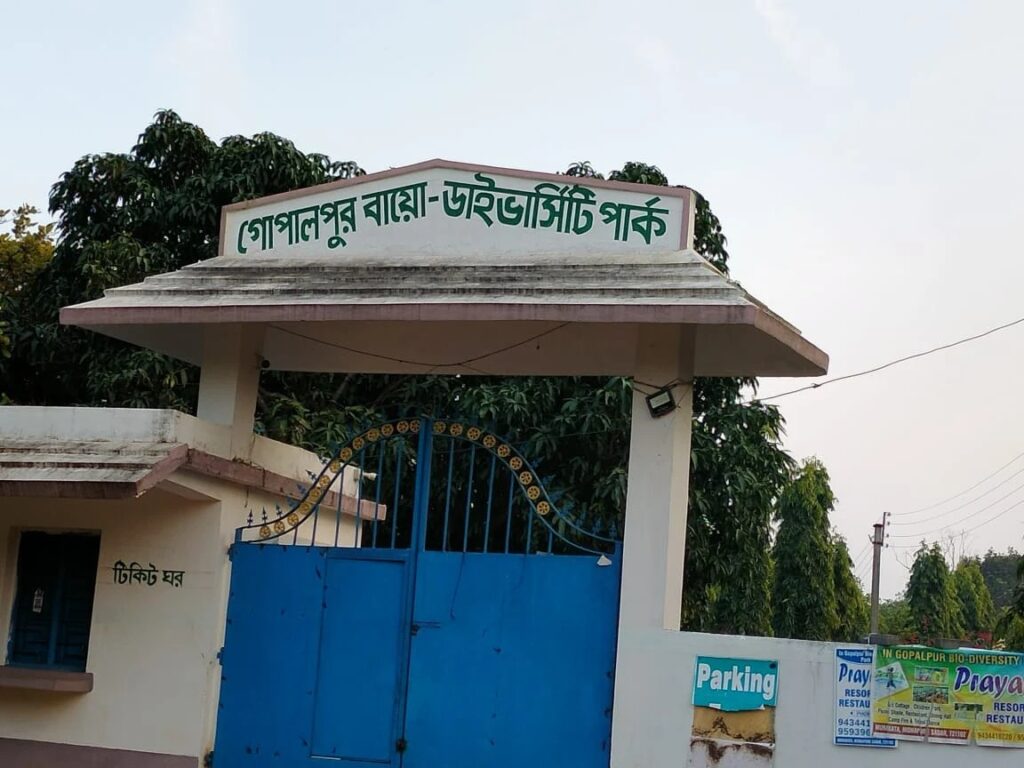
But on the ground, a different narrative has taken root.
The park, located under the Konkabati Gram Panchayat, now operates in partnership with a private entity—Prayas Resort, which offers day visits for ₹700 and overnight stays for ₹2,500. While these facilities have brought in new visitors and weekend tourists from nearby towns, they have also effectively shut the gates on those who nurtured and depended on this land for generations.
“Villagers and school students who used to enter freely are now stopped at the gate,” says Rabi Majhi, a member of the Nandagari Gram Panchayat. “Local people are struggling to collect non-timber forest products, and the main road has been blocked due to the development of Prayas Resort. Villagers now have to travel an extra 2–3 kilometres every day.”
The discontent is palpable in Murakata, Sijuya, Nandagari and Deluya—tribal-majority villages that once relied on the forest for collecting sal leaves, firewood, and other non-timber forest products (NTFPs).
Environmentalists have begun to voice concern that conservation efforts, if poorly managed, may end up alienating the very communities that once safeguarded these lands. Dr. Pravat Kumar Shit, an environmental scientist, reminds that the area—formerly under the Gurguripal Forest Range—was traditionally managed as a community resource. “The biodiversity park project was meant to revive the ecology, but by fencing it off and handing operations to a private resort, we risk undermining both environmental justice and traditional livelihoods,” he said.
For decades, local tribal households maintained a fragile harmony with the forest, gathering what they needed without over-exploitation. Many recall how these same groves once provided the shade, fruit, and medicinal herbs that sustained their families through lean seasons. Now, with entry restrictions and tourism infrastructure taking precedence, they fear that harmony is slipping away.
Officials from the West Bengal Biodiversity Board maintain that the park’s goal remains strictly conservation-oriented. The inclusion of tourism infrastructure, they argue, ensures the site’s financial sustainability while spreading environmental awareness. However, on the ground, villagers see little evidence of benefit-sharing or participatory management—key principles outlined in India’s biodiversity governance framework under the Biological Diversity Act, 2002.
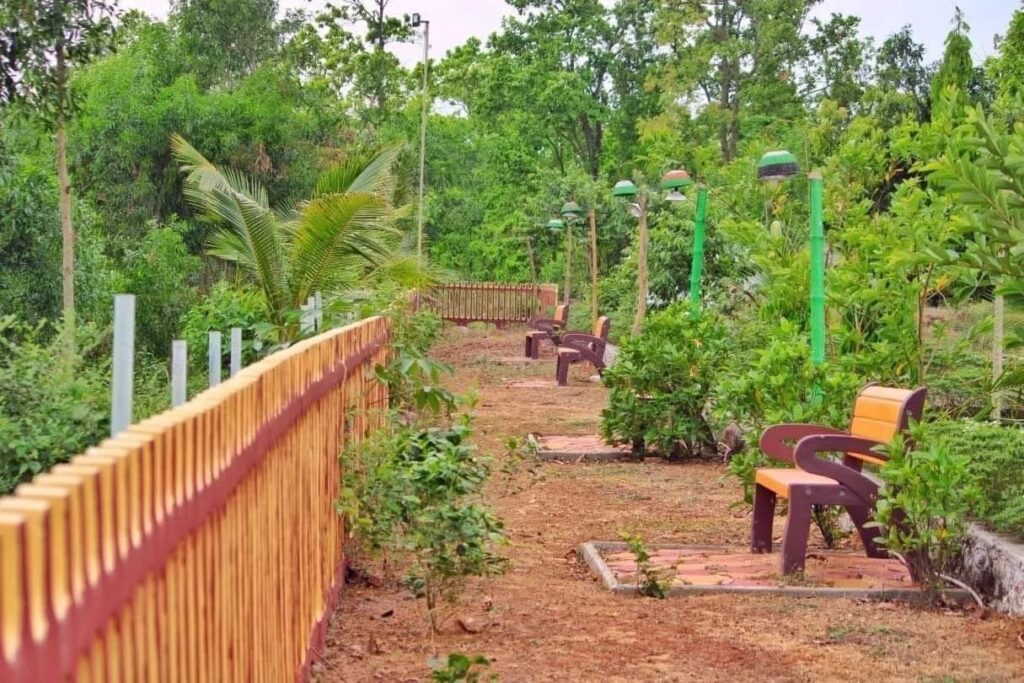
The park’s upcoming Abhaya Pond project, intended to conserve endangered fish species, represents a visionary step toward aquatic biodiversity preservation. But without local participation, experts warn, even well-meaning interventions risk being seen as imposed rather than inclusive.
The Gopalpur Biodiversity Park encapsulates a broader paradox confronting conservation across India—how to protect nature without excluding those who live closest to it. While urban visitors photograph butterflies and flowering sal trees along the park’s manicured trails, just beyond its boundary, villagers walk a longer road to collect firewood and water, their ancestral forest now out of reach.
Gopalpur was designed to be a sanctuary of coexistence—a living bridge between ecology and community. Whether it can still become one depends on how the state and its citizens choose to define conservation: as a matter of enclosure, or as a partnership that honours both land and life.

